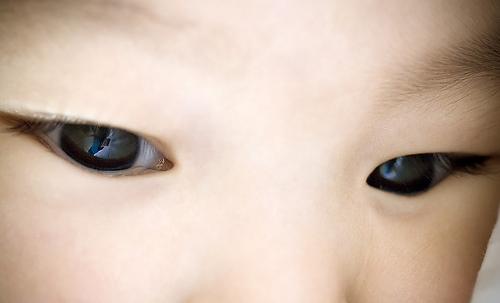

This theory is strongly supported because, in other areas of the world with very different climates (in the desert, the savannah), the people who live there also have slightly more slanted eyes than those who are settled in the western parts of the world. Therefore, it is considered that genetics evolved to allow these Homo sapiens to live better in their environment and survive. When groups of humans arrived in the Asian part of the world, there were strong climatological contrasts with periods of intense luminosity and, others, with extreme cold that led to very strong winds and storms.

Asians are believed to have slanted eyes out of a need to adapt to the environment in which they settled. There is another theory that, so far, is the most accepted by the scientific community. However, this theory was discarded as soon as it was discovered that the ocular structure is exactly the same in all humans: Eastern or Western. It was believed that Asians had the hole where the eyeball is installed in almond shape and, therefore, externally, the eyes were seen with this peculiar shape. To know why Asians have slanted eyes, there have been many theories and, the first of them believed that it was due to the bone structure of the people in this part of the world.

#Asian eyes skin
The correct name for Asian slanted eyes is “Mongolian bridle,” “epicanthic fold,” or “epicanthus.” It is different from a Westerner’s eye because, in the upper eyelid, there is a fold that covers the inner corner of the eye, causing the caruncle of the lacrimal to be covered and to descend to the bottom to finish joining with the skin of the face. So, you know, if you’ve ever wondered about the origin of Asian eyes, here is the answer! Why do Asians have slanted eyes? Why is this happening? In this article, we will tell you why do Asians have slanted eyes, discovering the three main theories about this distinctive fact and highlighting the one that, for the experts, is the most convincing. The shape of the eyes can be more or less almond-shaped but, the truth is that it is a distinctive fact of people who reside in countries such as Thailand, China, Japan, Mongolia, etc. This is because a J curl is straight at the base and only has a slight curl at the end.Most of the ethnic groups found in the Asian continent have the characteristic in the physiognomy: they have slanted eyes. A J curl is not the best option for opening up eyes with a monolid. Asian eyes typically have straighter lashes that slant downward. But guess what? The best eyelash extensions for Asian eyes don’t include this curl type. Just remember not to grab lashes that are more than 2-3 mm longer than the client’s natural lash. You don’t want the client to open her eyes and have short lashes! Since you know that a lot of the lash won’t be visible when the eyes are open, select longer lashes that will show up. When selecting lash length, remember that the top portion of lashes will be hidden under the monolid. Instead, tape close to the lash line so that the inner lashes are easier to work on. Placing eyelash extension tape too far from the lash line won’t effectively lift and open the eye. Eyes that have monolids or hooded lids may have hard to reach inner corners. But there is a right and wrong way to use it when it comes to monolid eyelash extensions. Lash tape is a lash artist’s BFF in the studio.


 0 kommentar(er)
0 kommentar(er)
